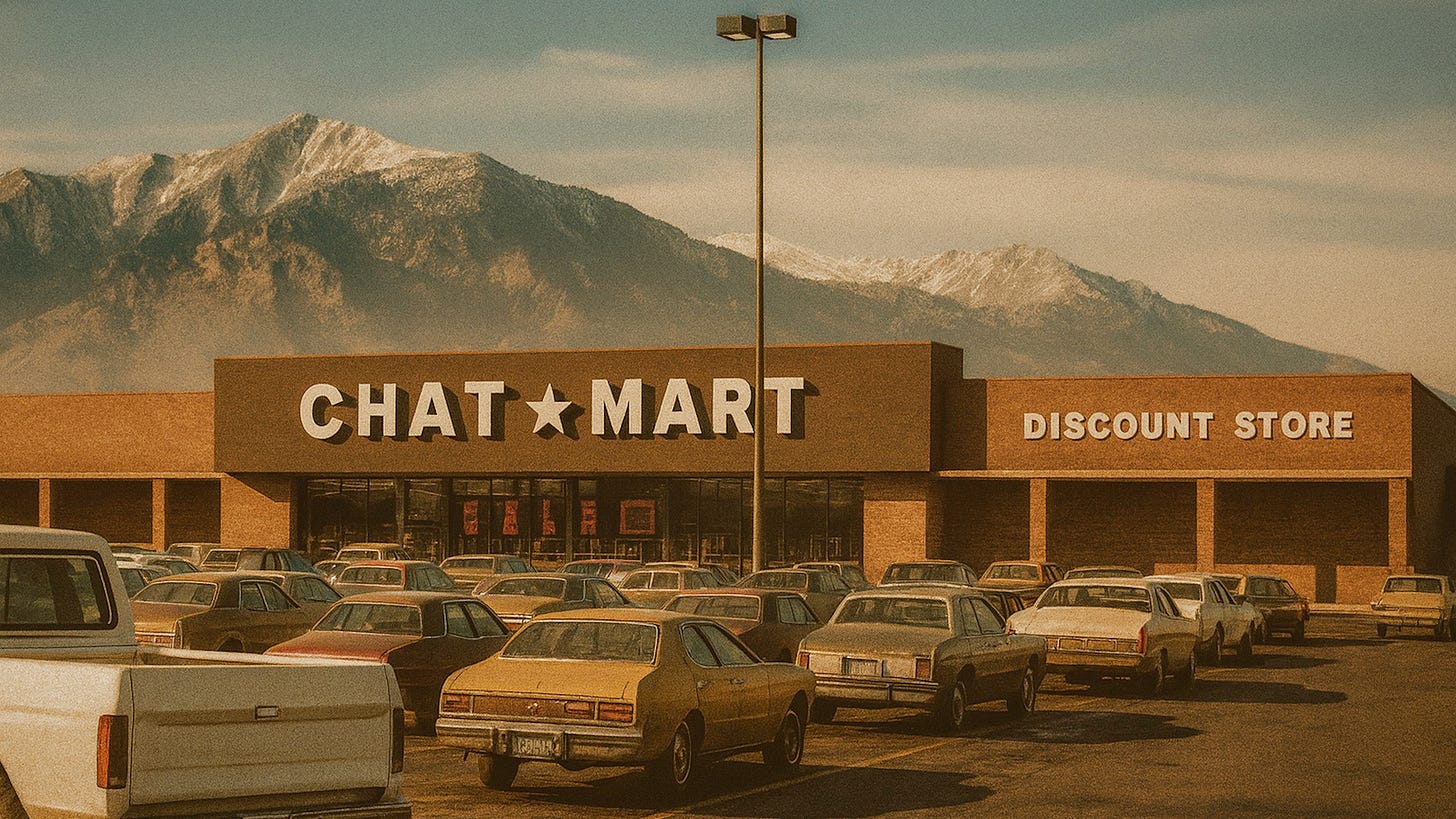The future of shopping is coming into view
With Walmart and Shopify onboard, can OpenAI train humans to shop with ChatGPT?
The cereal executives were FREAKING OUT at the dinner table.
Soon, they feared, their customers would start doing their grocery shopping through an artificial intelligence bot. And suddenly, they’d be eating Amazon-Os instead of their Os.
That was in 2018 — at a corporate dinner in New York, celebrating one of those over-funded YouTube networks — and the AI bot in question was Alexa, the talking Amazon speaker that showed up out of nowhere, became a cult hit, and head-faked a lot of people and businesses.
PRESENTED BY WORK & CO
JW Anderson Redefines Luxury Discovery — JW Anderson launched a new digital storefront at JWAnderson.com that invites shoppers into Jonathan Anderson’s world of play and possibility. The site blurs the line between commerce and culture. Rather than a conventional shop, it feels like an invitation to explore — an experience where discovery, curation, and surprise drive engagement. From colorful typographic tags to ever-shifting, dynamic product grids, the redesign brings fans a new way of shopping.
The design house worked with digital products leader Work & Co and an internal LVMH team on the overhaul. “It’s less about the standard notion of ‘shopping’ and rather more about finding — the joy of encountering something you didn’t know you were looking for, within a world designed to be savored as much as it is shopped,” said Work & Co Design Leader Calvin Teoh.
As we all know, that grocery shopping-by-Alexa phenomenon never happened: In terms of an “app store for voice,” Alexa has been a letdown, and Amazon squandered its early lead in consumer AI, if it even had one. Most people who buy Cheerios still buy them the same way they always have — by placing them into a grocery store shopping cart.
But a lot has changed in the past decade — mostly in the past year or two. And thanks to the rise of more powerful AI tools like ChatGPT, AI’s influence on shopping and commerce could drive a profound economic shift in the coming years. We still don’t know how it’s going to work, but key pieces of the puzzle are increasingly coming into view.
But a lot has changed in the past decade — mostly in the past year or two. And thanks to the rise of more powerful AI tools like ChatGPT, AI’s influence on shopping and commerce could drive a profound economic shift in the coming years. We still don’t know how it’s going to work, but key pieces of the puzzle are increasingly coming into view.
This week, Walmart announced that it will soon become integrated into a new feature of ChatGPT called Instant Checkout, which lets ChatGPT users make purchases directly, without having the leave the chat. “Whether planning meals, restocking household essentials, or finding something new, customers can simply chat and buy, and Walmart will handle the rest,” the company said.
Today, humans are still in control of what they buy through ChatGPT and where they buy it from — Instant Checkout is just a time-saving friction reducer, and the merchant still does all the same work as it would for a direct sale.
“When someone asks a shopping question — ‘best running shoes under $100’ or ‘gifts for a ceramics lover’ — ChatGPT shows the most relevant products from across the web,” the company explains. “Product results are organic and unsponsored, ranked purely on relevance to the user.”
When OpenAI announced the Instant Checkout feature a few weeks ago, it initially supported Etsy purchases, with support also coming “soon” for Shopify’s ecosystem. Shopify, of course, includes more than a million merchants, ranging from direct-to-consumer e-commerce brands and retail stores to modern giants like Glossier, Skims, and Vuori.
Adding Walmart to Instant Checkout is an entirely different thing: Walmart is the largest retail chain in the US by revenue, the largest grocery store in the country, and the number-two e-commerce player after Amazon. In addition to all the quotidian items Walmart sells in its stores and on its website, it also runs a giant online marketplace with more than 200,000 sellers and more than half a billion items.
Walmart is not Amazon, but it has spent the past decade catching up, using its website, retail store footprint, and fast delivery to attract wealthier shoppers and become an “everything store” in its own right.
So if you’re imagining that ChatGPT’s user base is too fancy for Walmart, that’s old thinking: Among paying OpenAI customers in the US, 87% have also purchased from Walmart over the past 12 months, according to data from Consumer Edge, which tracks consumer debit and credit card spending. (An even higher portion of those paying OpenAI customers — almost 97% — have shopped at Amazon over that span, for context.)
The point: The amount and variety of things that you’ll soon be able to purchase through ChatGPT with very little friction, thanks to Walmart and Shopify, is vast.
This is a big step for OpenAI as it tries to fashion ChatGPT into a more capable, enjoyable, futuristic shopping experience. There’s still a lot of work to do, and it’s still very early. But its sheer size alone — ChatGPT will likely pass 1 billion active users early next year — stands to make it an important player in driving e-commerce purchases.




